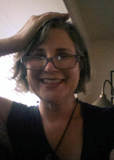One of the most significant contributors to the level of happiness you experience is your life paradigm… [the] operating model for your life—Domonique Bertolucci
I’ve been thinking so much about happiness lately: what it is, what it means in the grand scheme of things and, especially, how to get more of it. I have so many of the ingredients of a happy life—health, friends, family, work that I enjoy, safety, money for essentials and even for fun—and yet I’m probably not as happy as I could (or should?) be under the circumstances. Why is that?
On a fundamental level, it probably has a lot to do with the worldview or paradigm, that I’ve been operating under for most of my life. It goes something like this:
Life isn’t supposed to be happy—we’re here to grow, and growth happens most when we experience difficulties. People who are lucky and happy are the exception, and that will never happen to me. I have to work hard and control everything/everyone around me in order to be okay. Something is always missing—I never get to have what I really want (because that is asking too much).
With this worldview, I’m predisposed to focus on what’s missing, what needs to be done, what could go wrong, etc. Even at the best of times, I’m waiting for the other shoe to drop and working hard to prevent it. It’s not a very relaxing way to live! There’s always something that I’m waiting and wishing for in order to truly be happy. The underlying reality beneath this paradigm is a feeling of unworthiness: that I don’t really deserve to be happy or to get what I want.
Our original paradigms, because they develop gradually from a very young age, can be hard to detect—like the water a fish swims in. To find out what yours is, think about how you would answer these questions: What is life all about (or, what is it like)? What is my role in it? What always happens to me? What can I expect from life?
Fortunately, our paradigms are not set in stone. I can choose a different worldview, and gradually adopt behaviours that go with it. This is what I am choosing to believe instead:
I am safe and taken care of at every moment. I don’t have to struggle or make anything happen (even my own growth), or do anything at all in order to deserve happiness. Happiness and love are available to me all the time, in every circumstance. Everything is unfolding exactly the way it should, so I can relax and trust that all is well just as it is.
Of course, in order for the new paradigm to become more than just a bunch of empty words, the sense of unworthiness that lives beneath and supports my old paradigm must be healed. Fortunately, I believe that healing automatically follows on the heels of awareness and willingness. (Again, I don’t have to make it happen!) Once we become aware of the worldview that controls us and willing to change it, the healing process has already begun.







